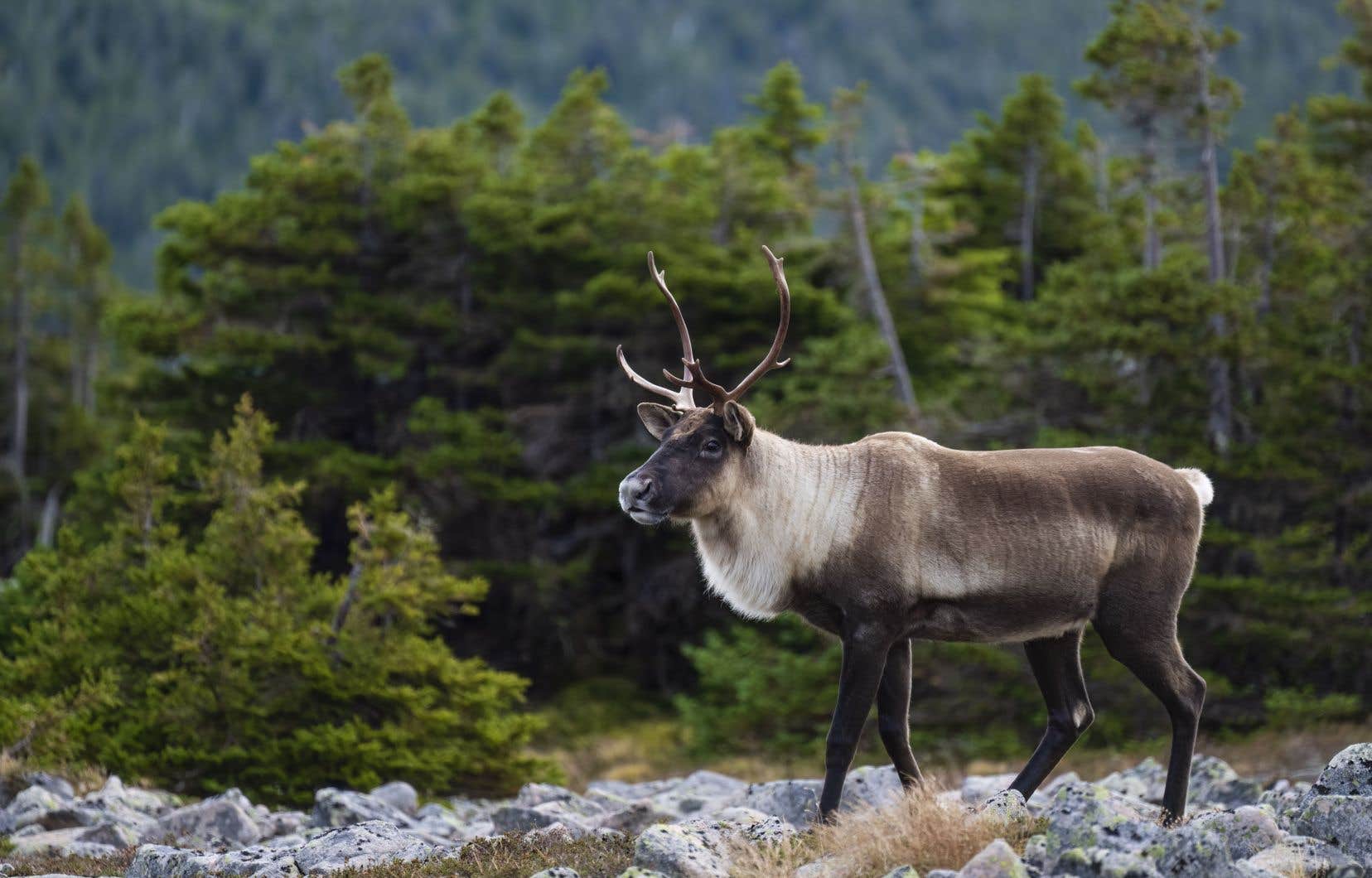Quebec Environment Minister Benoit Charette cannot say if his plan for protecting caribou habitat will be presented before the next forest fire season. But while in Gaspésie there are only around forty animals left, the prefect of the MRC of Haute-Gaspésie maintains that the uncertainty can no longer continue.
After the federal Minister of the Environment, Steven Guilbeault, who repeated Monday that he will have “the legal obligation to act” if Quebec does not quickly present its strategy, it is the turn of the prefect of the MRC de la Haute -Gaspésie to show exasperation.
“It’s a bit like the torment of gout, it creates uncertainty for all the players who benefit from the territory here at home. It is high time that the strategy was tabled,” indicated Guy Bernatchez.
The presentation of the forest caribou habitat protection strategy has been postponed several times since 2019 and last February, Minister Charette indicated that it would finally be presented during the “next days” or “next weeks “.
But in an interview with The Canadian Press on Tuesday, the minister no longer had the same confidence as a month ago.
Asked whether the plan will be revealed before the next forest fire season, he indicated that he is “looking forward to moving on to something else”, but that he “cannot give a date” or “an precise timetable”.
He stressed that “social acceptability” in the caribou issue was difficult to obtain.
“I am not able to give you a precise time given the complexity of the matter, it is a work of education, of consultation” and “we must keep in mind the importance of forestry and the forest for the survival of our regions,” underlined Benoit Charette.
Strategies specific to each region
The prefect of the MRC of Haute-Gaspésie, Guy Bernatchez, who “is starting to get impatient because the waiting is endless”, is aware of the difficulty of creating a strategy that would achieve consensus in all regions where caribou live .
But he pleads for a strategy adapted to each region where the animal is present and considers that Gaspésie is ready to put in place measures to protect the species.
“We have a regional consensus. We have a consultation between all the actors who carry out activities in the forest for the measures and actions to follow”, so “the government must submit its strategy, if it is not at the national level, then it must deposit for Gaspésie,” indicated the prefect.
According to him, even the forestry industry, responsible for the precariousness of the caribou, agrees on “the measures that must be put in place” in his region.
Forestry companies “are ready to move away from the Gaspésie park to encourage the return of old-growth forests, to restore the caribou habitat to proper form,” mentioned Guy Bernatchez.
Hiking prohibited in the Chic-Chocs
There are only 5,252 forest or mountain caribou left in Quebec.
In Gaspésie, an isolated population of around forty individuals lives in the mountain ranges of Chic-Chocs and the McGerrigle mountains.
In recent months, trails in the Chic-Chocs wildlife reserve have been closed to protect the caribou population which was designated as a threatened species in 2009 in Quebec.
According to Prefect Bernatchez, “these closures have a devastating impact on the entire tourism industry in Haute-Gaspésie”.
He asks that these sectors be reopened for “non-motorized outdoor activities” such as hiking or skiing.
“Stakeholders in the recreational tourism sector, a pillar of regional development in Haute-Gaspésie, need predictability to plan for the future and ensure the sustainability of their activities,” he argued.
But the Ministry of the Environment justified the closure of certain trails by the disturbance caused by the simple presence of humans in caribou territory.
“It is considered a disturbance to voluntarily approach caribou, to follow them, to chase them or to allow unsupervised domestic animals to approach them,” the ministry said in a press release.
“Human presence can push caribou to move more frequently and reduce their feeding time due to greater vigilance required,” said the Ministry of the Environment.
There is “urgency to act”
The caribou population has been declining in Quebec for several years. Logging is the main cause of this precariousness, particularly due to logging roads which destroy habitat and encourage the movement of caribou’s natural predators such as bears and wolves.
In August 2022, the Independent Commission on Forest and Mountain Caribou submitted a report to the government, in which it underlined that there is “urgency to act” and that it was necessary to “proceed as quickly as possible to development and implementation of a strategy for the protection and recovery of woodland caribou.
A few days after this report, Quebec and Ottawa reached an agreement in principle to protect the species and the province committed to publishing its final strategy on forest and mountain caribou before the end of June 2023.
Minister Charette, however, pushed back the date because of the forest fires which were then hitting Quebec territory. At the time, the government said it wanted to examine the impact of the fires on caribou and logging.
“The next forest fire season is coming and we still don’t have that plan. Something will have to happen soon,” said federal Minister Steven Guilbeault in an exchange with journalists on Monday.
Minister Guilbeault could recommend the issuance of a “deer protection decree” if Quebec does not act.
